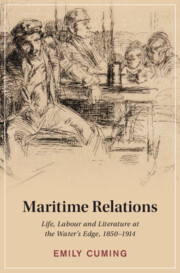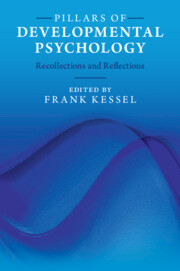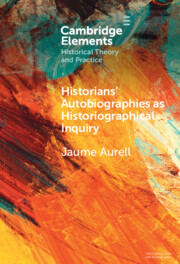Refine search
Actions for selected content:
141 results
Fifth Collection
- from Letters for the Advancement of Humanity
-
- Book:
- Johann Gottfried Herder: Letters for the Advancement of Humanity
- Published online:
- 13 December 2025
- Print publication:
- 22 January 2026, pp 207-266
-
- Chapter
- Export citation
3 - Pursuing Life Stories: Inquisitors and Suspects
- from Part I - The Institution
-
-
- Book:
- The Cambridge Companion to the Spanish Inquisition
- Published online:
- 04 December 2025
- Print publication:
- 18 December 2025, pp 72-94
-
- Chapter
- Export citation
Chapter 4 - Rumstick Road in Rehearsal
-
- Book:
- American Performance in 1976
- Published online:
- 27 November 2025
- Print publication:
- 11 December 2025, pp 215-268
-
- Chapter
- Export citation
Chapter 1 - Adrienne Kennedy and Cecil Taylor
-
- Book:
- American Performance in 1976
- Published online:
- 27 November 2025
- Print publication:
- 11 December 2025, pp 44-103
-
- Chapter
- Export citation
Chapter 1 - Maps from Indigenous Territory
-
- Book:
- American Modernism and the Cartographic Imagination
- Published online:
- 09 October 2025
- Print publication:
- 23 October 2025, pp 30-67
-
- Chapter
- Export citation
1 - The Historiographical Context
- from Part I - The Selbstzeugnisse in Context
-
- Book:
- Making Merchants
- Published online:
- 19 September 2025
- Print publication:
- 09 October 2025, pp 9-17
-
- Chapter
- Export citation
The ghostwriter and the test-tube baby: a medical breakthrough story
-
- Journal:
- Medical History / Volume 69 / Issue 3 / July 2025
- Published online by Cambridge University Press:
- 14 September 2025, pp. 528-551
-
- Article
-
- You have access
- Open access
- HTML
- Export citation
Chapter 1 - A Sailor in the Family
-
- Book:
- Maritime Relations
- Published online:
- 23 August 2025
- Print publication:
- 04 September 2025, pp 18-59
-
- Chapter
- Export citation

Maritime Relations
- Life, Labour and Literature at the Water's Edge, 1850–1914
-
- Published online:
- 23 August 2025
- Print publication:
- 04 September 2025
Chapter 7 - But How Can We Find Ourselves Again?
-
- Book:
- Nietzsche on the Methods and Aims of Philosophy
- Published online:
- 25 July 2025
- Print publication:
- 14 August 2025, pp 144-164
-
- Chapter
- Export citation
3 - From “Final Solution” to “Holocaust”: Autobiographical Reflections
-
-
- Book:
- The Cambridge History of the Holocaust
- Published online:
- 16 May 2025
- Print publication:
- 12 June 2025, pp 62-73
-
- Chapter
- Export citation
Chapter 13 - Entre Balas y Rugidos
- from Part IV - Form
-
-
- Book:
- Latinx Literature in Transition, 1848–1992
- Published online:
- 10 April 2025
- Print publication:
- 17 April 2025, pp 227-241
-
- Chapter
- Export citation
Chapter 7 - The Camaraderie of Influence
- from Part II - Being
-
-
- Book:
- Latinx Literature in Transition, 1848–1992
- Published online:
- 10 April 2025
- Print publication:
- 17 April 2025, pp 126-142
-
- Chapter
- Export citation
Chapter 37 - Reflections of a Developmental Psychologist from India
-
-
- Book:
- Pillars of Developmental Psychology
- Published online:
- 14 February 2025
- Print publication:
- 20 February 2025, pp 421-433
-
- Chapter
- Export citation

Pillars of Developmental Psychology
- Recollections and Reflections
-
- Published online:
- 14 February 2025
- Print publication:
- 20 February 2025
Getting lost in a field: a personal history of the development of behavioural public policy
-
- Journal:
- Behavioural Public Policy / Volume 9 / Issue 4 / October 2025
- Published online by Cambridge University Press:
- 03 February 2025, pp. 647-651
-
- Article
-
- You have access
- Open access
- HTML
- Export citation
Chapter 34 - Sermons
- from Part VI - Form, Genre, and Poetics
-
-
- Book:
- Gerard Manley Hopkins in Context
- Published online:
- 16 January 2025
- Print publication:
- 16 January 2025, pp 292-298
-
- Chapter
- Export citation
Chapter 1 - Untimely Deaths and Artful Promise in Henry James’s Post-1890 Writings
-
- Book:
- Twentieth-Century Literature and the Aftermath of War
- Published online:
- 20 December 2024
- Print publication:
- 09 January 2025, pp 37-78
-
- Chapter
- Export citation

Historians' Autobiographies as Historiographical Inquiry
- A Global Perspective
-
- Published online:
- 06 January 2025
- Print publication:
- 02 January 2025
-
- Element
- Export citation
3.10 - Self-Writing
- from History 3 - Forms
-
-
- Book:
- The New Cambridge History of Russian Literature
- Published online:
- 31 December 2024
- Print publication:
- 12 December 2024, pp 624-642
-
- Chapter
- Export citation
